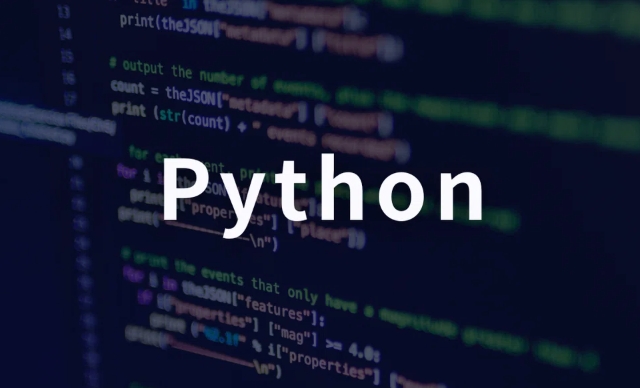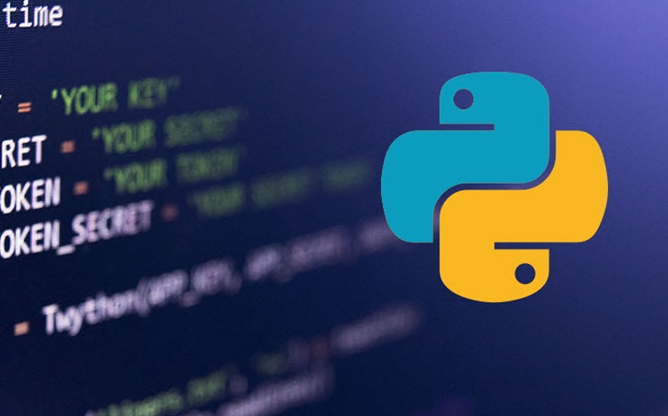Does Python have function overloading
No, Python does not support function overloading in the traditional sense. 1. Using default parameters allows simulating overloading by providing optional arguments with default values. 2. Utilizing args and *kwargs offers flexibility to handle variable numbers of arguments but requires internal logic to manage cases. 3. The functools.singledispatch decorator enables overloading based on the type of the first argument, offering a clean and scalable solution. These methods provide alternatives to achieve similar functionality depending on the needs for simplicity, flexibility, or readability.

Yes, Python doesn’t support function overloading in the traditional sense like some other languages such as Java or C . In those languages, you can define multiple functions with the same name but different parameters. But in Python, if you try to define multiple functions with the same name, the last one will simply overwrite the previous ones.

That said, there are ways to achieve similar behavior if you need to handle different inputs.
Using Default Parameters
One common way to simulate function overloading is by using default arguments. This lets a function accept different numbers of parameters without breaking.

For example:
def greet(name, message="Hello"):
print(f"{message}, {name}!")You can call this function in multiple ways:

greet("Alice")→ uses default messagegreet("Bob", "Hi")→ uses custom message
This works well when the variations are simple and you can reasonably set defaults.
Using *args and **kwargs
If you want more flexibility, especially when handling variable types or numbers of inputs, you can use *args and **kwargs.
Here’s an example:
def process_data(*args):
if len(args) == 1:
print(f"Single value: {args[0]}")
elif len(args) > 1:
print(f"Multiple values: {args}")Now you can call:
process_data(10)process_data(1, 2, 3)
It’s flexible, but also requires careful logic inside the function to handle each case properly.
Using the functools.singledispatch Decorator
Python provides a neat built-in way for function overloading based on the type of the first argument through functools.singledispatch.
Here’s how it works:
from functools import singledispatch
@singledispatch
def show(item):
print("Default case:", item)
@show.register(int)
def _(item):
print("Integer:", item)
@show.register(str)
def _(item):
print("String:", item)Then:
-
show(42)→ Integer: 42 -
show("hello")→ String: hello
This gives a clean and scalable way to simulate overloading by type, though it only dispatches based on the first argument's type.
So What’s the Takeaway?
- No, Python does not have native function overloading.
- Yes, you can simulate it using default args,
*args, orsingledispatch. - Which method to use depends on your specific needs — simplicity vs flexibility vs readability.
Basically, while Python won't let you overload functions the way some other languages do, it gives you tools that can get the job done just fine.
The above is the detailed content of Does Python have function overloading. For more information, please follow other related articles on the PHP Chinese website!

Hot AI Tools

Undress AI Tool
Undress images for free

Undresser.AI Undress
AI-powered app for creating realistic nude photos

AI Clothes Remover
Online AI tool for removing clothes from photos.

Clothoff.io
AI clothes remover

Video Face Swap
Swap faces in any video effortlessly with our completely free AI face swap tool!

Hot Article

Hot Tools

Notepad++7.3.1
Easy-to-use and free code editor

SublimeText3 Chinese version
Chinese version, very easy to use

Zend Studio 13.0.1
Powerful PHP integrated development environment

Dreamweaver CS6
Visual web development tools

SublimeText3 Mac version
God-level code editing software (SublimeText3)

Hot Topics
 1793
1793
 16
16
 1737
1737
 56
56
 1588
1588
 29
29
 267
267
 587
587
 Can a Python class have multiple constructors?
Jul 15, 2025 am 02:54 AM
Can a Python class have multiple constructors?
Jul 15, 2025 am 02:54 AM
Yes,aPythonclasscanhavemultipleconstructorsthroughalternativetechniques.1.Usedefaultargumentsinthe__init__methodtoallowflexibleinitializationwithvaryingnumbersofparameters.2.Defineclassmethodsasalternativeconstructorsforclearerandscalableobjectcreati
 Python for loop range
Jul 14, 2025 am 02:47 AM
Python for loop range
Jul 14, 2025 am 02:47 AM
In Python, using a for loop with the range() function is a common way to control the number of loops. 1. Use when you know the number of loops or need to access elements by index; 2. Range(stop) from 0 to stop-1, range(start,stop) from start to stop-1, range(start,stop) adds step size; 3. Note that range does not contain the end value, and returns iterable objects instead of lists in Python 3; 4. You can convert to a list through list(range()), and use negative step size in reverse order.
 Accessing data from a web API in Python
Jul 16, 2025 am 04:52 AM
Accessing data from a web API in Python
Jul 16, 2025 am 04:52 AM
The key to using Python to call WebAPI to obtain data is to master the basic processes and common tools. 1. Using requests to initiate HTTP requests is the most direct way. Use the get method to obtain the response and use json() to parse the data; 2. For APIs that need authentication, you can add tokens or keys through headers; 3. You need to check the response status code, it is recommended to use response.raise_for_status() to automatically handle exceptions; 4. Facing the paging interface, you can request different pages in turn and add delays to avoid frequency limitations; 5. When processing the returned JSON data, you need to extract information according to the structure, and complex data can be converted to Data
 How to read a JSON file in Python?
Jul 14, 2025 am 02:42 AM
How to read a JSON file in Python?
Jul 14, 2025 am 02:42 AM
Reading JSON files can be implemented in Python through the json module. The specific steps are: use the open() function to open the file, use json.load() to load the content, and the data will be returned in a dictionary or list form; if you process JSON strings, you should use json.loads(). Common problems include file path errors, incorrect JSON format, encoding problems and data type conversion differences. Pay attention to path accuracy, format legality, encoding settings, and mapping of boolean values and null.
 python one line if else
Jul 15, 2025 am 01:38 AM
python one line if else
Jul 15, 2025 am 01:38 AM
Python's onelineifelse is a ternary operator, written as xifconditionelsey, which is used to simplify simple conditional judgment. It can be used for variable assignment, such as status="adult"ifage>=18else"minor"; it can also be used to directly return results in functions, such as defget_status(age):return"adult"ifage>=18else"minor"; although nested use is supported, such as result="A"i
 python case-insensitive string compare if
Jul 14, 2025 am 02:53 AM
python case-insensitive string compare if
Jul 14, 2025 am 02:53 AM
The most direct way to make case-insensitive string comparisons in Python is to use .lower() or .upper() to compare. For example: str1.lower()==str2.lower() can determine whether it is equal; secondly, for multilingual text, it is recommended to use a more thorough casefold() method, such as "straß".casefold() will be converted to "strasse", while .lower() may retain specific characters; in addition, it should be avoided to use == comparison directly, unless the case is confirmed to be consistent, it is easy to cause logical errors; finally, when processing user input, database or matching
 Python for loop to read file line by line
Jul 14, 2025 am 02:47 AM
Python for loop to read file line by line
Jul 14, 2025 am 02:47 AM
Using a for loop to read files line by line is an efficient way to process large files. 1. The basic usage is to open the file through withopen() and automatically manage the closing. Combined with forlineinfile to traverse each line. line.strip() can remove line breaks and spaces; 2. If you need to record the line number, you can use enumerate(file, start=1) to let the line number start from 1; 3. When processing non-ASCII files, you should specify encoding parameters such as utf-8 to avoid encoding errors. These methods are concise and practical, and are suitable for most text processing scenarios.
 How to use the map function in Python
Jul 15, 2025 am 02:52 AM
How to use the map function in Python
Jul 15, 2025 am 02:52 AM
Python's map() function implements efficient data conversion by acting as specified functions on each element of the iterable object in turn. 1. Its basic usage is map(function,iterable), which returns a "lazy load" map object, which is often converted to list() to view results; 2. It is often used with lambda, which is suitable for simple logic, such as converting strings to uppercase; 3. It can be passed in multiple iterable objects, provided that the number of function parameters matches, such as calculating the discounted price and discount; 4. Usage techniques include combining built-in functions to quickly type conversion, handling None situations similar to zip(), and avoiding excessive nesting to affect readability. Mastering map() can make the code more concise and professional





